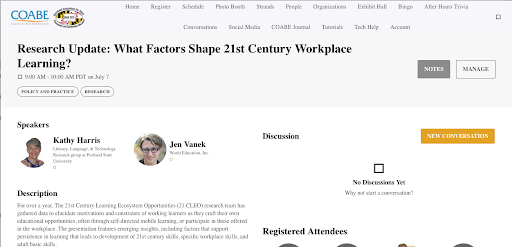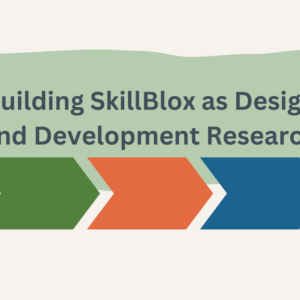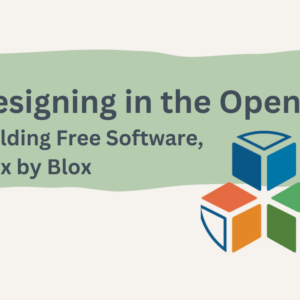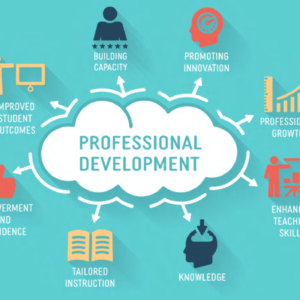By 21CLEO Research Team
Our project has covered a lot of territory in a short time. The early stages were spent forming relationships, conducting interviews, and learning about the context of employer-supported educational opportunities. More recently, our work has shifted to analyzing interview data making sense of what we’re learning.
In qualitative research, that generally means organizing and then reading data sources, systematically adding labels (codes) to chunks of data and organizing data into categories and labeling themes, including commonalities or tensions among the different data sources. In our analysis, we are striving to: 1) understand who working learners are and 2) identify the characteristics of employer-supported education that support persistence.
In order to make our description of working-learners who participate in employer-supported educational activities more vivid, we have taken a unique approach to better represent why characteristics of a particular learning opportunity may or may not align with working-learners’ needs. This approach involves creating personas from interview data we’ve gathered in three areas: mandated courses and training, basic education, and degree or certificate attaining courses/programs.
What is a Persona?
Ward developed personas to help librarians understand their patrons. She described a persona as a detailed description of an imaginary person constructed out of well-understood, highly specified data drawn from real people. Persona means “mask” in Greek, and Nielsen reminds us that the word is used because when designers consider the end user they need to put on the mask of the person for whom they are designing. Persona development is an important phase of the user-centered design process commonly used by instructional designers. A 2009 article by Kouprie and Visser is focused on engineering design. It suggests that if the end user is personified, and can be seen as a real person, a designer develops empathy and can more easily understand or anticipate the user’s needs.
How are Persona Created?
The development of a persona is a human-centered approach to representing complex phenomena. The persona takes the place of a virtual, elastic user by fleshing out a vivid representation of a specific individual with characteristics. As such, a persona invites the readers into a shared understanding of who the users are. From there, the persona can be used to guide design choices that emphasize the user’s goals rather than the user’s tasks.
Kouprie and Visser created a framework showing a process by which a designer might build empathy for an end-user. In such a process, the designer “steps into the life of the user, wanders around for a while and then steps out of the life of the user with a deeper understanding of this user” (p. 444). The process was illustrated by Baakie, Maddrell, and Stauffer in their writing on creating personas to support instructional design of adult basic skills content (see Figure 1)
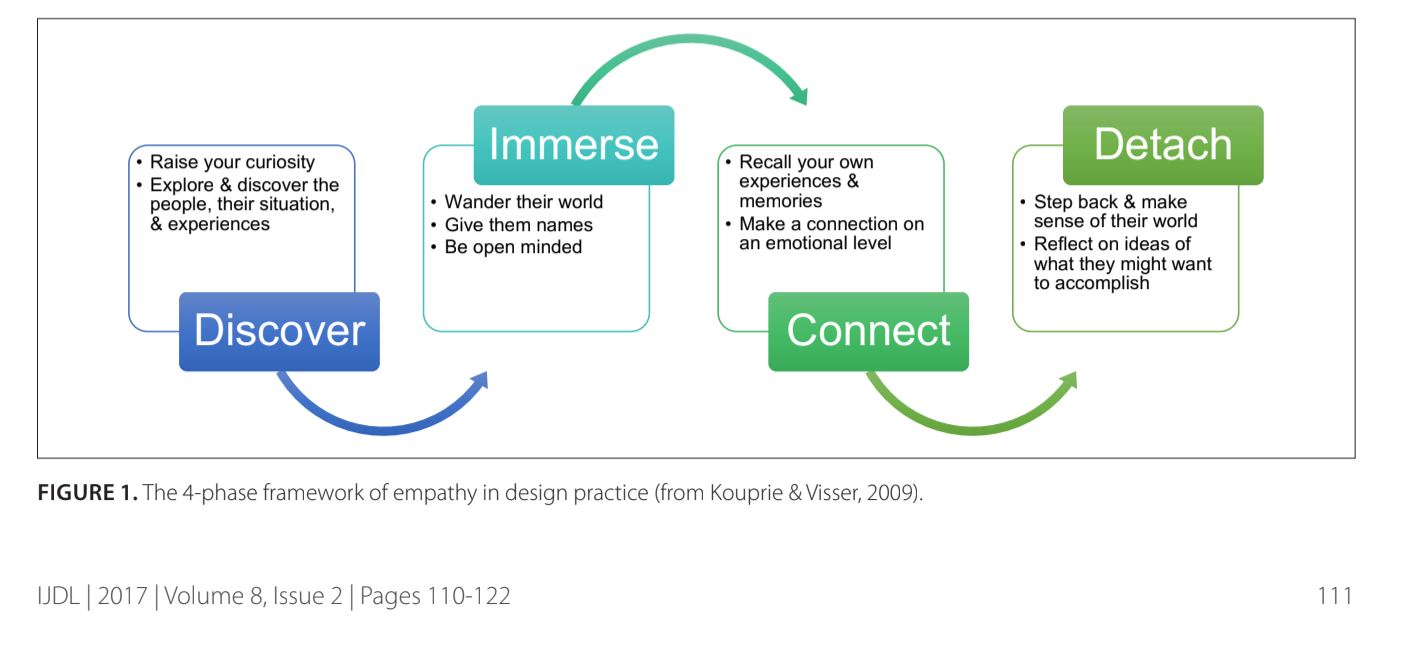
The four phases, 1) discovery, (2) immersion, (3) connection, and (4) detachment, describe stages of engagement of the designer with the imagined end-user and guide the designer to develop a curiosity about a learner. The process of persona development can be done by meeting and interviewing different learners or by gathering and analyzing data about them. Immersion involves diving into data to develop a deeper understanding of the learner whereby the designer is able to take the learner’s perspective as a point of reference.
Our Use of Persona Development
Though persona development has been around since the mid-1990’s and used in different disciplines (most especially in human-computer interaction design), it is not an approach commonly used in qualitative research. Qualitative research instead uses a “composite case study” process in which aspects of various people are taken and blended in order to create one story that illustrates a broader perspective. However, a composite case study may not result in “making the working learners’ voices central” — an important end goal of our research study.
Developing personas is a new approach for us. We are using this approach to create a compelling and approachable representation of our aggregated interview data. This research appeals widely to different audiences including practitioners and program developers who may find the persona to be useful in understanding the working learners experiences and can be highly beneficial to consider when designing employer supported educational opportunities. We believe personas suit our immediate need to find a way to clearly show who working learners are and situate our findings within the existing instructional design paradigm.
If you would like to learn more about this project, join us at the virtual COABE conference on Tuesday, July 7th at 9am Pacific/12pm Eastern for our presentation called “Research update: What factors shape 21st Century workplace learning?”
